Photograph Of The Apollo 13 Spacecraft Being Returned To The Prime Recovery Ship, USS Iwo Jima, 4/17/1970

Photograph of the Apollo 13 Spacecraft Being Returned to the Prime Recovery Ship, USS Iwo Jima, 4/17/1970
Series: Color Photograph Files, 1965 - 2002. Record Group 255: Records of the National Aeronautics and Space Administration, 1903 - 2006.
Apollo 13 was intended to be the third Apollo mission to land on the Moon. The craft was launched from Kennedy Space Center in Merritt Island, Florida on April 11, 1970. Two days into the flight, damaged wire insulation inside the oxygen tank in the service module ignited, causing an explosion which vented the oxygen tank into space. Without oxygen, the service module became inoperable and the lunar mission quickly turned into a mission to safely return the crew to Earth. The astronauts worked with Mission Control to shut down the command module in order to conserve the remaining oxygen, forcing all three astronauts into the lunar module. The astronauts continued to work with Mission Control to combat one technical failure after another until, on April 17, 1970, the crew landed safely in the South Pacific Ocean.
source: phillyarchives.tumblr.com
More Posts from Nasa and Others
This Week @ NASA--April 14, 2017
Cassini and the Hubble Space Telescope, two of our long-running missions, are providing new details about the ocean-bearing moons of Jupiter and Saturn. Hubble's monitoring of plume activity on Europa and Cassini's long-term investigation of Enceladus are laying the groundwork for our Europa Clipper mission, slated for launch in the 2020s. Also, Shane Kimbrough returns home after 171 days aboard the Space Station, celebrating the first Space Shuttle mission and more!

Ocean Worlds
Our two long-running missions, Cassini and the Hubble Space Telescope, are providing new details about “ocean worlds,” specifically the moons of Jupiter and Saturn.

The details – discussed during our April 13 science briefing – included the announcement by the Cassini mission team that a key ingredient for life has been found in the ocean on Saturn's moon Enceladus.

Meanwhile, in 2016 Hubble spotted a likely plume erupting from Jupiter’s moon Europa at the same location as one in 2014, reenforcing the notion of liquid water erupting from the moon.

These observations are laying the groundwork for our Europa Clipper mission, planned for launch in the 2020s.

Welcome Home, Shane!
Shane Kimbrough and his Russian colleagues returned home safely after spending 173 days in space during his mission to the International Space Station.

Meet the Next Crew to Launch to the Station
Meanwhile, astronaut Peggy Whitson assumed command of the orbital platform and she and her crew await the next occupants of the station, which is slated to launch April 20.

Student Launch Initiative
We’ve announced the preliminary winner of the 2017 Student Launch Initiative that took place near our Marshall Space Fight Center, The final selection will be announced in May. The students showcased advanced aerospace and engineering skills by launching their respective model rockets to an altitude of one mile, deploying an automated parachute and safely landing them for re-use.

Langley’s New Lab
On April 11, a ground-breaking ceremony took place at our Langley Research Center for the new Systems Measurement Laboratory. The 175,000 square-foot facility will be a world class lab for the research and development of new measurement concepts, technologies and systems that will enable the to meet its missions in space explorations, science and aeronautics.

Yuri’s Night
Space fans celebrated Yuri’s Night on April 12 at the Air and Space Museum and around the world. On April 12, 1961, cosmonaut Yuri Gagrin became the first person to orbit the Earth.

Celebrating the First Space Shuttle Launch
On April 12, 1981, John Young and Bob Crippin launched aboard Space Shuttle Columbia on STS-1 a two-day mission, the first of the Shuttle Program’s 30-year history.

Watch the full episode:
Make sure to follow us on Tumblr for your regular dose of space: http://nasa.tumblr.com
The Darkness that Followed Hurricane Michael
Earlier this month, the southeastern United States was struck by Hurricane Michael. After the category 4 storm made landfall on Oct. 10, 2018, Hurricane Michael proceeded to knock out power for at least 2.5 million customers across Florida, Georgia, North Carolina, and Virginia.

In this data visualization, you can clearly see where the lights were taken out in Panama City, Florida. A team of our scientists from Goddard Space Flight Center processed and corrected the raw data to filter out stray light from the Moon, fires, airglow, and any other sources that are not electric lights. They also removed atmosphere interference from dust, haze, and clouds.

In the visualization above, you can see a natural view of the night lights—and a step of the filtering process in an effort to clean up some of the cloud cover. The line through the middle is the path Hurricane Michael took.

Although the damage was severe, tens of thousands of electric power industry workers from all over the country—and even Canada—worked together to restore power to the affected areas. Most of the power was restored by Oct. 15, but some people still need to wait a little longer for the power grids to be rebuilt. Read more here.
Make sure to follow us on Tumblr for your regular dose of space: http://nasa.tumblr.com.
The Artemis Story: Where We Are Now and Where We’re Going

Using a sustainable architecture and sophisticated hardware unlike any other, the first woman and the next man will set foot on the surface of the Moon by 2024. Artemis I, the first mission of our powerful Space Launch System (SLS) rocket and Orion spacecraft, is an important step in reaching that goal.
As we close out 2019 and look forward to 2020, here’s where we stand in the Artemis story — and what to expect in 2020.
Cranking Up The Heat on Orion
The Artemis I Orion spacecraft arrived at our Plum Brook Station in Sandusky, Ohio, on Tuesday, Nov. 26 for in-space environmental testing in preparation for Artemis I.
This four-month test campaign will subject the spacecraft, consisting of its crew module and European-built service module, to the vacuum, extreme temperatures (ranging from -250° to 300° F) and electromagnetic environment it will experience during the three-week journey around the Moon and back. The goal of testing is to confirm the spacecraft’s components and systems work properly under in-space conditions, while gathering data to ensure the spacecraft is fit for all subsequent Artemis missions to the Moon and beyond. This is the final critical step before the spacecraft is ready to be joined with the Space Launch System rocket for this first test flight in 2020!
Bringing Everyone Together

On Dec. 9, we welcomed members of the public to our Michoud Assembly Facility in New Orleans for #Artemis Day and to get an up-close look at the hardware that will help power our Artemis missions. The 43-acre facility has more than enough room for guests and the Artemis I, II, and III rocket hardware! NASA Administrator Jim Bridenstine formally unveiled the fully assembled core stage of our SLS rocket for the first Artemis mission to the Moon, then guests toured of the facility to see flight hardware for Artemis II and III. The full-day event — complete with two panel discussions and an exhibit hall — marked a milestone moment as we prepare for an exciting next phase in 2020.
Rolling On and Moving Out

Once engineers and technicians at Michoud complete functional testing on the Artemis I core stage, it will be rolled out of the Michoud factory and loaded onto our Pegasus barge for a very special delivery indeed. About this time last year, our Pegasus barge crew was delivering a test version of the liquid hydrogen tank from Michoud to NASA’s Marshall Space Flight Center in Huntsville for structural testing. This season, the Pegasus team will be transporting a much larger piece of hardware — the entire core stage — on a slightly shorter journey to the agency’s nearby Stennis Space Center near Bay St. Louis, Mississippi.
Special Delivery

Why Stennis, you ask? The giant core stage will be locked and loaded into the B2 Test Stand there for the landmark Green Run test series. During the test series, the entire stage, including its extensive avionics and flight software systems, will be tested in full. The series will culminate with a hot fire of all four RS-25 engines and will certify the complex stage “go for launch.” The next time the core stage and its four engines fire as one will be on the launchpad at NASA’s Kennedy Space Center in Florida.
Already Working on Artemis II

As Orion and SLS make progress toward the pad for Artemis I, employees at NASA centers and large and small companies across America are hard at work assembling and manufacturing flight hardware for Artemis II and beyond. The second mission of SLS and Orion will be a test flight with astronauts aboard that will go around the Moon before returning home. Our work today will pave the way for a new generation of moonwalkers and Artemis explorers.
Make sure to follow us on Tumblr for your regular dose of space: http://nasa.tumblr.com.
6 Ways You Are Safer Thanks to NASA Technology
By now everyone knows that we are to thank for the memory foam in your mattress and the camera in your cell phone. (Right? Right.)
But our technology is often also involved behind the scenes—in ways that make the products we use daily safer and stronger, and in some cases, that can even save lives.
Here are some examples from this year’s edition of Spinoff, our yearly roundup of “space in your life”:
Impact Testing

What happens to your car bumper in an accident? When does it crumple and when does it crack? And are all bumpers coming off the assembly line created equal?
These types of questions are incredibly important when designing a safe car, and one technology that helps almost every U.S. automobile manufacturer find answers is something we helped develop when we had similar questions about the Space Shuttle.
Before flying again after the Columbia disaster in 2003, we had to be sure we understood what went wrong and how to prevent it from ever happening again. We worked with Trilion, Inc. to develop a system using high-speed cameras and software to analyze every impact—from the one that actually happened on the Shuttle to any others we could imagine—and design fixes.
Finding Survivors

We’re pretty good at finding things you can’t see with the naked eye—from distant exoplanets to water on Mars.
But there are also plenty of uses for that know-how on Earth.
One example that has already saved lives: locating heartbeats under debris.
Engineers at our Jet Propulsion Laboratory adapted technology first devised to look for gravity fluctuations to create FINDER, which stands for Finding Individuals for Disaster and Emergency Response and can detect survivors through dense rubble.
We have licensed the technology to two companies, including R4, and it has already been used in natural disaster responses, including after earthquakes in Nepal, Mexico City, Ecuador, and after Hurricane Maria in Puerto Rico.
Fighting Forest Fires

As we have seen this year with devastating wildfires in California, forest fires can spread incredibly quickly.
Knowing when to order an evacuation, where to send firefighters, and how to make every other decision—all amid a raging inferno—depends on having the most up-to-date information as quickly as possible.
Using our expertise in remote sensing and communicating from space, we helped the U.S. Forest Service make its process faster and more reliable, so the data from airborne sensors gets to decision makers on the front line and at the command center in the blink of an eye.
Safer, Germ-Free Ambulances

When paramedics come racing into a home, the last thing anybody is worrying about is where the ambulance was earlier that morning. A device we helped create ensures you won’t have to.
AMBUstat creates a fog that sterilizes every surface in an ambulance in minutes, so any bacteria, viruses or other contaminants won’t linger on to infect the next patient.
This technology works its magic through the power of atomic oxygen—the unpaired oxygen atoms that are common in the upper reaches of Earth’s atmosphere. We’ve had to learn about these atoms to devise ways to ensure they won’t destroy our spacecraft or harm astronauts, but here, we were able to use that knowledge to direct that destructive power at germs.
Air Filters

Did you know the air we breathe inside buildings is often up to 10 times more polluted than the air outdoors?
Put the air under a microscope and it’s not pretty, but a discovery we made in the 1990s can make a big impact.
We were working on a way to clear a harmful chemical that accumulates around plants growing on a spacecraft, and it turned out to also neutralize bacteria, viruses, and mold and eliminate volatile organic compounds.
Now air purifiers using this technology are deployed in hospital operating rooms, restaurant kitchens, and even major baseball stadiums to improve air quality and keep everyone healthier. Oh, and you can buy one for your house, too.
Driverless Cars

Car companies are moving full-speed ahead to build the driverless cars of the not-so-distant future. Software first created to help self-learning robots navigate on Mars may help keep passengers and pedestrians safer once those cars hit the road. The software creates an artificially intelligent “brain” for a car (or drone, for that matter) that can automatically identify and differentiate between cars, trucks, pedestrians, cyclists, and more, helping ensure the car doesn’t endanger any of them.
So, now that you know a few of the spinoff technologies that we helped develop, you can look for them throughout your day. Visit our page to learn about more spinoff technologies: https://spinoff.nasa.gov Make sure to follow us on Tumblr for your regular dose of space: http://nasa.tumblr.com.
Space Gardening 101
You can’t escape eating (or gardening!) your vegetables, even if you’re in space. On Aug. 10, astronauts on the International Space Station sampled their first space grown salad. This freshly harvest red romaine lettuce was grown in the “Veggie” plant growth chamber that is designed to make gardens flourish in weightlessness.
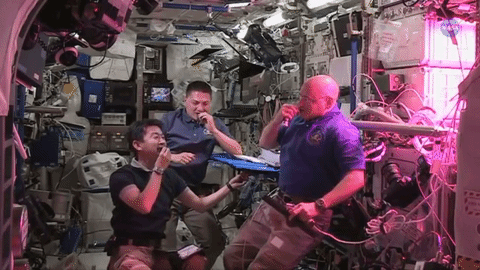
In a weightless environment, there is no up and down, so roots grow in all directions. Water and soil, the materials used to anchor these plants and allow for root growth tend to float away.
How Do We Grow Plants in Space?
1. Plant Pillows
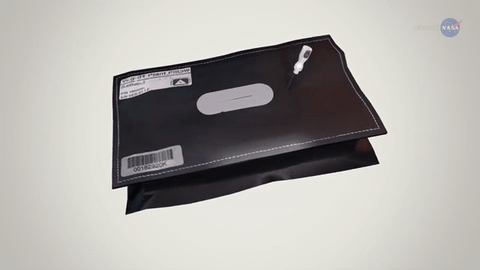
The Veggie chamber helps solve the problems of a weightless environment by using ‘plant pillows’, sounds comfy right? These pillows are bags filled with material for growing plants in space.
2. Wicks

Wicks are implanted into the bags and are used to draw water from inside the pillow to the plant.
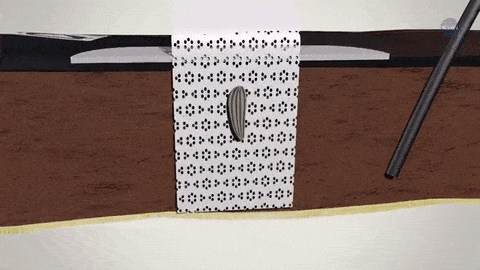
These wicks also provide a place to glue the seeds. It’s important to orient the seeds so roots will grow ‘down’, and shoots that emerge will push out of the bag.
3. LED Lights
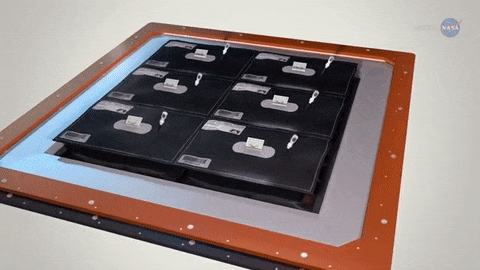
LED lights are used for photosynthesis and give the shoots a sense of direction so they keep growing upward. The walls of the Veggie chamber can expand to make room for the plant as it grows.
The purple/pinkish hue surrounding the plants in Veggie is the result of a combination of the red and blue lights, which is what the plants need to grow. Green LEDS were added so the plants look like edible food rather than weird purple plants.
Why are we growing plants in space?
When astronauts travel on deep space missions, like Mars, they will need to be self-sufficient for long periods of time. Having the ability to grow their own food is a big step in that direction. There is also a desire to grow flowering vegetables in space, which is why we are currently tending to zinnia flowers on orbit. Growing these flowering plants will help us understand longer duration growing plants that have to flower in space, such as tomatoes.
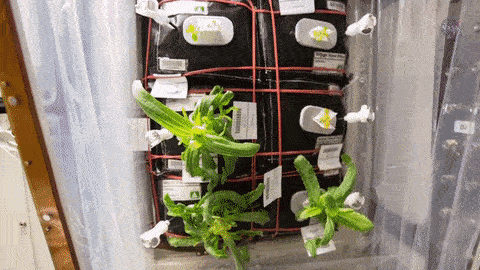
What’s Next? The next SpaceX delivery will include seeds for a small cabbage and additional red romaine lettuce. Upcoming experiments will use various ratios of red and blue lights and different fertilizers in attempts to improve crop yield, nutrition and flavor. The findings from these experiments can be utilized both on Earth and in space.
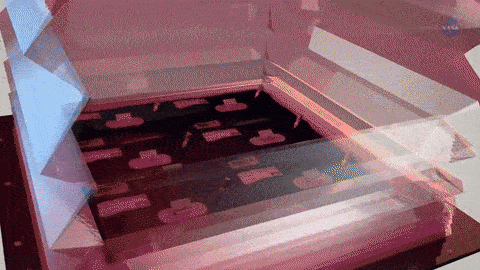
In addition to the nutrition benefits of growing vegetables in space, the psychological benefits are also significant. Having living plants can help with stress and increase the crews’ enjoyment. It provides the sights, smells and tastes of Earth.
To learn more about gardening in space, watch ScienceCast HERE.
Make sure to follow us on Tumblr for your regular dose of space: http://nasa.tumblr.com
First All-Woman Spacewalk
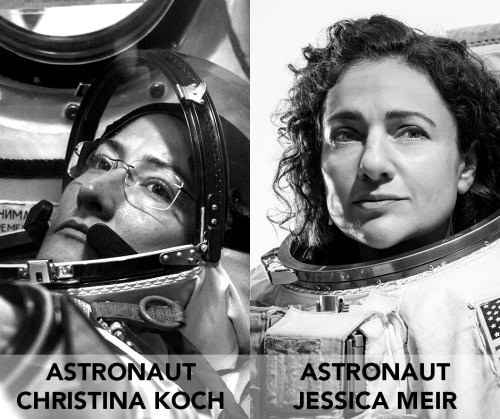
NASA astronauts and best friends, Christina Koch and Jessica Meir, made history Friday, October 18, 2019, by conducting the first all-woman spacewalk outside the International Space Station (ISS)! The Expedition 61 flight engineers ventured into the vacuum of space at 7:38 a.m. EDT to swap out a failed power controller that regulates the batteries used to collect and distribute power to the orbital laboratory – a task that took a total of seven hours and 17 minutes to complete.
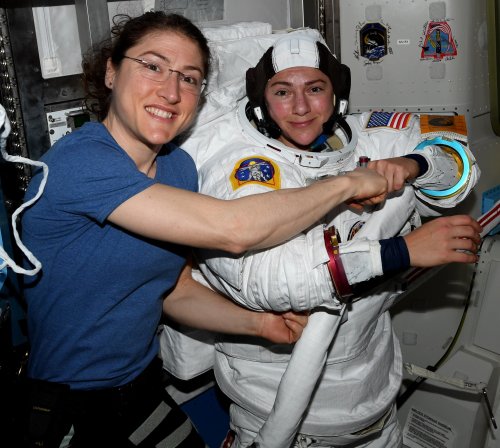
This was Koch’s fourth spacewalk and Meir’s first. Both women, selected as astronaut candidates in 2013, are on their first trip to work and live aboard the space station. Meir will be the 15th woman to spacewalk, and the 14th U.S. woman.
Get to know the astronauts
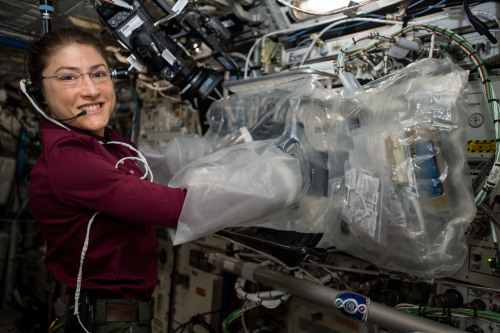
In addition to being an astronaut, Christina Koch is an engineer and physicist. Her career has taken her to extreme parts of the planet to conduct scientific field missions in places like the Antarctic South Pole and Greenland’s Summit Station. Prior to being selected as an astronaut candidate in 2013, she worked as an Electrical Engineer at our Goddard Space Flight Center’s Laboratory for High Energy Astrophysics.
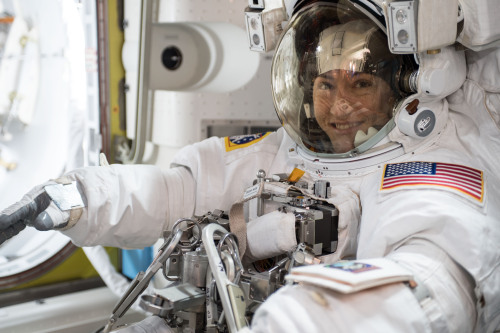
Koch left Earth on March 14, 2019, and is slated to set a record for the longest single spaceflight by a woman with an expected total of 328 days in space. Her extended mission will provide researchers the opportunity to observe the effects of long-duration spaceflight on a female body in preparation for human missions to the Moon and Mars.
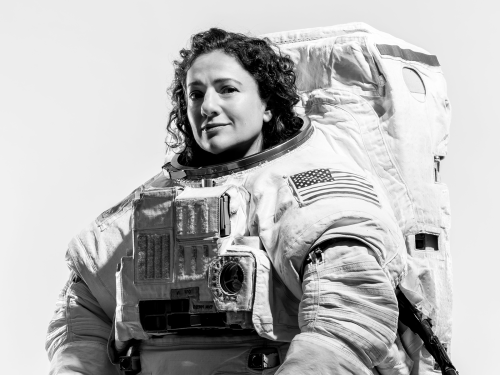
Jessica Meir dreamed of the day she would make it to space since the age of five. That dream became a reality on Wednesday, Sept. 25, 2019 as she left Earth on her first spaceflight – later floating into her new home aboard the International Space Station.
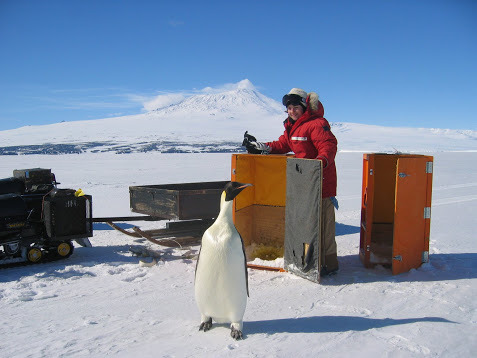
While Meir’s new home is more than 200 miles over the Earth, she is no stranger to extreme environments. She studied penguins in Antarctica and mapped caves in Italy – both of which prepared her for the ultimate extreme environment: space.
#AllWomanSpacewalk, what’s the deal?
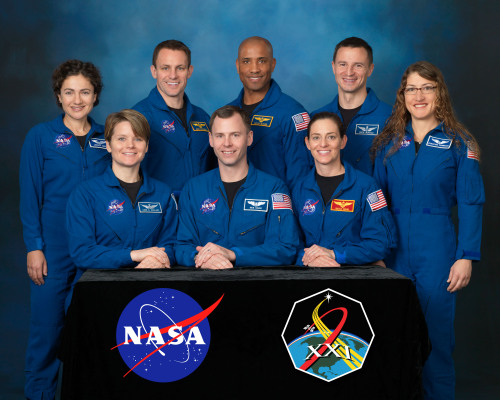
The all-woman spacewalk wasn’t something we purposefully planned; it is a testament to the increasing number of female astronauts in the space program. For example, Koch’s and Meir’s 2013 class of astronaut candidates was 50 percent women!
When asked in an interview about the importance of conducting her mission and this spacewalk, Koch said,
“In the end, I do think it’s important, and I think it’s important because of the historical nature of what we’re doing. In the past women haven’t always been at the table. It’s wonderful to be contributing to the space program at a time when all contributions are being accepted, when everyone has a role. That can lead in turn to increased chance for success. There are a lot of people who derive motivation from inspiring stories of people who look like them, and I think it’s an important story to tell.”
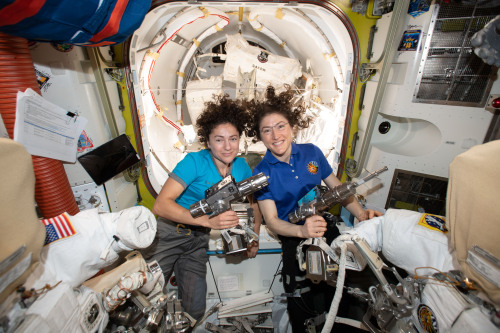
It’s important to note that spacewalks are not easy; astronauts typically describe them as the most physically challenging thing they do. Assignments are made on the basis of which astronauts are the best prepared to accomplish the tasks at hand under the conditions at the time. Today, Koch and Meir were the top astronauts for the job.
Women are no stranger to spacewalks!

While this was the first spacewalk to be conducted entirely by women, women are no strangers to spacewalks. Exactly 35 years and one week ago, Kathryn Sullivan (pictured above) made her own historic debut as the first U.S. woman to conduct a spacewalk. Since then, a total of 14 women (15 including Jessica) have ventured into the vacuum of space on 40 different spacewalks. Former Astronaut Peggy Whitson performed a record number of 10! From Astronauts to mission directors, women have been making their mark at the agency for decades now. A few of our recent pioneers are:
Astronaut Kate Rubins: First person to sequence DNA in space
Astronaut Peggy Whitson: First woman to command the ISS
Sandra Cauffman: Director of our Earth Science’s Division
Nicola Fox: Director of our Heliophysics Division
Lori Glaze: Director of our Planetary Science Division
Coming soon: The first woman to walk on the Moon
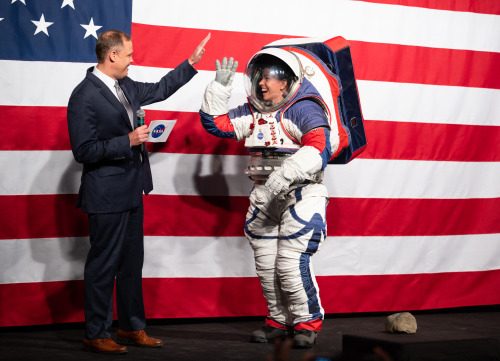
The first all-woman spacewalk is a milestone worth noting and celebrating as we look forward to putting the first woman and the next man on the Moon by 2024 with our Artemis lunar exploration program. With today’s historic event, we once again set a precedence for women to lead in space exploration.
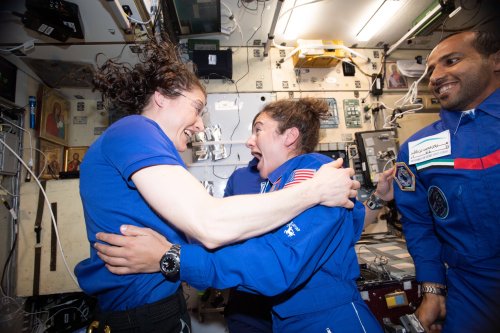
We hope achievements such as this provide inspiration to you all around the world, proving that hard work can lead you to great heights. This is not just a historic day for NASA, but a moment we can all feel proud of.
Didn’t have time to tune in? Check out the replay, here. Koch was wearing the spacesuit with red stripes, while Meir’s had no stripes.
If you’d like to keep up with Christian Koch and Jessica Meir’s work 254 miles above planet Earth, follow them on Twitter at @Astro_ Christina and @Astro_Jessica.
Be sure to follow us on Tumblr for your regular dose of space: http://nasa.tumblr.com

Answer Time from Space!
I’m on day 321 of my #YearInSpace, and today I surpassed 500 days in space total. Let’s chat! Sat., Feb. 13 at 1:45 p.m. ET.
Solar System: Things to Know This Week
Our Juno mission has been exploring Jupiter since July 2016 with a special passenger on board: JunoCam, an instrument designed to take spectacular close-up color images of the largest planet in our solar system. From the raw images, citizen scientists have processed a range of beautiful photographs that highlight Jupiter's features, even turning them into works of art. Below, 10 stunning images JunoCam has given us over the past year.
1. Jovian tempest.

This color-enhanced image of a massive, raging storm in Jupiter's northern hemisphere was captured by our Juno spacecraft during its ninth close flyby on Oct. 24, 2017. The storm is rotating counter-clockwise with a wide range of cloud altitudes, and the darker clouds are expected to be deeper in the atmosphere than the brightest clouds.
2. A southern stunner.

Jupiter's southern hemisphere shows off in beautiful detail in this image taken on Oct. 24, 2017. The color-enhanced view captures one of the white ovals in the "String of Pearls," one of eight massive rotating storms at 40 degrees south latitude on the gas giant planet.
3. Dreaming in color.

Artist Mik Petter created this unique digital piece using data from the JunoCam. The art form, known as fractals, uses mathematical formulas to create an infinite variety of form, detail, color and light. The original JunoCam image was taken on July 10, 2017.
4. Jovian moon shadow.

Jupiter's moon Amalthea casts a shadow on the gas giant planet in this image taken on Sept. 1, 2017. The elongated shape of the shadow is a result of both the location of the moon with relation to Jupiter in this image as well as the irregular shape of the moon itself.
5. 95 minutes over Jupiter.

Once every 53 days, Juno swings close to Jupiter, speeding over its clouds. In about two hours, the spacecraft travels from a perch over Jupiter's north pole through its closest approach (perijove), then passes over the south pole on its way back out. This sequence shows 11 color-enhanced images from Perijove 8 (Sept. 1, 2017) with the south pole on the left (11th image in the sequence) and the north pole on the right (first image in the sequence).
6. Soaring high.
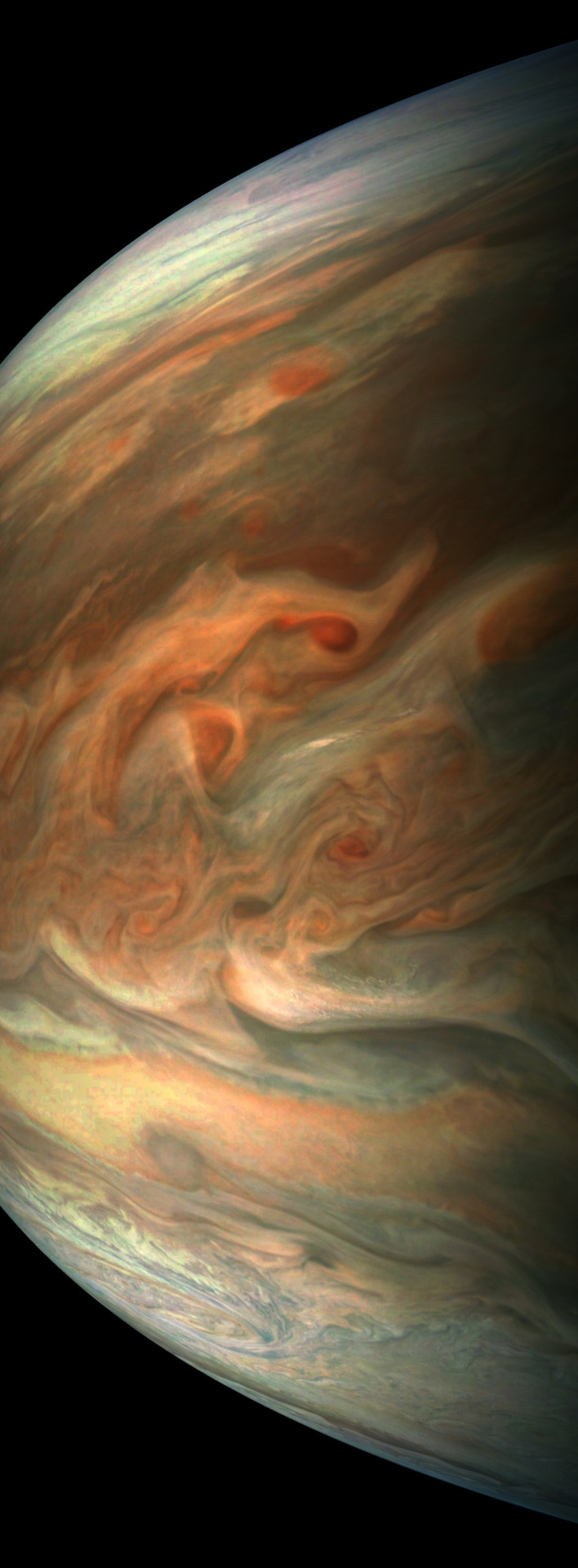
This striking image of Jupiter was taken on Sept. 1, 2017 as Juno performed its eighth flyby. The spacecraft was 4,707 miles (7,576 kilometers) from the tops of the clouds of the planet at a latitude of about -17.4 degrees. Noteworthy: "Whale's Tail" and "Dan's Spot."
7. In true color.
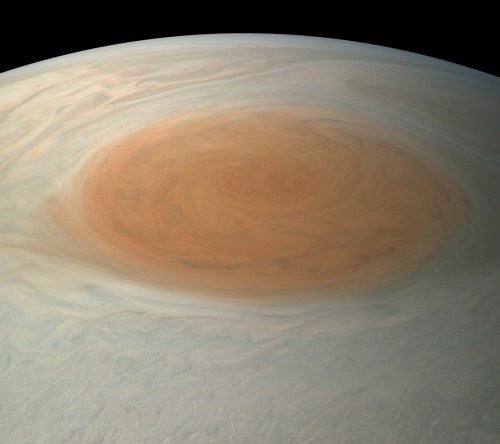
This true-color image offers a natural color rendition of what the Great Red Spot and surrounding areas would look like to human eyes from Juno's position. The image was taken on July 10, 2017 as the Juno spacecraft performed its seventh close flyby of Jupiter.
8. The 'face' of Jupiter.

JunoCam images aren't just for art and science—sometimes they're created for a good chuckle. This image, processed by citizen scientist Jason Major, is titled "Jovey McJupiterface." By rotating the image 180 degrees and orienting it from south up, two white oval storms turn into eyeballs, and the "face" of Jupiter is revealed. The original image was taken by the Juno spacecraft on May 19, 2017.
9. Bands of clouds.

This enhanced-color image of Jupiter's bands of light and dark clouds was created by citizen scientists Gerald Eichstädt and Seán Doran. Three of the white oval storms known as the "String of Pearls" are visible near the top of the image. Each of the alternating light and dark atmospheric bands in this image is wider than Earth, and each rages around Jupiter at hundreds of miles (kilometers) per hour. The lighter areas are regions where gas is rising, and the darker bands are regions where gas is sinking. Juno captured the image on May 19, 2017.
10. The edge.

This enhanced-color image of a mysterious dark spot on Jupiter seems to reveal a Jovian "galaxy" of swirling storms. Juno captured this image on Feb. 2, 2017 and citizen scientist Roman Tkachenko enhanced the color to bring out the rich detail in the storm and surrounding clouds. Just south of the dark storm is a bright, oval-shaped storm with high, bright, white clouds, reminiscent of a swirling galaxy. As a final touch, he rotated the image 90 degrees, turning the picture into a work of art.
To learn more about the Juno mission at Jupiter, visit: www.nasa.gov/juno.
Follow the Juno mission on Facebook, Instagram and Twitter.
Make sure to follow us on Tumblr for your regular dose of space: http://nasa.tumblr.com.
Bend Your Mind With Special Relativity

Ever dreamed of traveling nearly as fast as light? Zipping across the universe to check out the sights seems like it could be fun. But, not so fast. There are a few things you should know before you jump into your rocket. At near the speed of light, the day-to-day physics we know on Earth need a few modifications. And if you’re thinking Albert Einstein will be entering this equation, you’re right!

We live our daily lives using what scientists call Newtonian physics, as in Isaac Newton, the guy who had the proverbial apple fall on his head. Imagine that you are on a sidewalk, watching your friend walk toward the front of a bus as it drives away. The bus is moving at 30 mph. Your friend walks at 3 mph. To you, your friend is moving at 33 mph — you simply add the two speeds together. (The 30 mph the bus is moving plus 3 mph that your friend is moving inside the bus.) This is a simple example of Newtonian physics.
However, imagine that your friend on the bus turns on a flashlight, and you both measure the speed of its light. You would both measure it to be moving at 670 million mph (or 1 billion kilometers per hour) — this is the speed of light. Even though the flashlight is with your friend on the moving bus, you still both measure the speed of light to be exactly the same. Suddenly you see how Einstein’s physics is different from Newton’s.

This prediction was a key part of Einstein’s special theory of relativity: The speed of light is the same for any observer, no matter their relative speed. This leads to many seemingly weird effects.
Before talking about those surprising effects, it’s good to take a moment to talk about point of view. For the rest of this discussion, we’ll assume that you’re at rest — sitting in one spot in space, not moving. And your friend is on a rocket ship that you measure to be traveling at 90% the speed of light. Neither of you is changing speed or direction. Scientists give this a fancy name — an “inertial frame of reference.”
With the stage set, now we can talk about a couple of super-weird effects of traveling near the speed of light. Relativity messes with simple things like distance and time, doing stuff that might blow your mind!

Let’s say you have a stick that is 36 inches long (91 centimeters). Your friend on the rocket doesn’t know the stick’s length, so they measure it by comparing it to a ruler they have as they zoom past you. They find your stick is just 16 inches (40 centimeters) long — less than half the length you measured! This effect is called length contraction. And if they were moving even faster, your friend would measure your stick to be even shorter. The cool thing about relativity is that both of those measurements are right! We see these effects in particle physics with fast-moving particles.
If your friend was traveling to our nearest neighbor star, Proxima Centauri, how far would they think it was? From Earth, we measure Proxima Centauri to be 4.2 light-years away (where one light-year is the distance light travels in a year, or about 5.8 trillion miles). However, your friend, who is traveling at 90% the speed of light in the rocket, would measure the distance between Earth and Proxima Centauri to be just over 1.8 light-years.
That’s just length … let’s talk about time!

Now let’s say you and your friend on the rocket have identical synchronized clocks. When your friend reaches Proxima Centauri, they send you a signal, telling you how long their trip took them. Their clock says the trip took just over two years. Remember, they measure the distance to be 1.8 light-years. However, you would see that your clock, which stayed at rest with you, says the trip took 4.7 years — more than twice as long!
This effect is called time dilation — time on moving clocks appears to tick slower.

None of this accounts for your friend accelerating their rocket or stopping at Proxima Centauri. All of this math gets more complicated if you and your friend were speeding up, slowing down, or changing directions. For instance, if your friend slowed down to stop at Proxima Centauri, they would have aged less than you on their trip!
Now you’re ready for a few tips on near-light-speed travel! Watch the video below for more.
Now, if you need to relax a bit after this whirlwind, near-light-speed trip, you can grab our coloring pages of scenes from the video. And if you enjoyed the trip, download a postcard to send to a friend. Finally, if you want to explore more of the wonders of the universe, follow NASA Universe on Facebook and Twitter.
Make sure to follow us on Tumblr for your regular dose of space: http://nasa.tumblr.com

Jupiter in infrared light, as seen by NASA’s InfraRed Telescope Facility (IRTF). The observations were obtained in support of NASA’s Juno mission by a team headed by Juno scientist Glenn Orton.
-
 retropopcult liked this · 1 year ago
retropopcult liked this · 1 year ago -
 dawn101 reblogged this · 2 years ago
dawn101 reblogged this · 2 years ago -
 az4069 liked this · 2 years ago
az4069 liked this · 2 years ago -
 pioneersa8800 liked this · 2 years ago
pioneersa8800 liked this · 2 years ago -
 dreamingofthingstocome liked this · 3 years ago
dreamingofthingstocome liked this · 3 years ago -
 thumper1000 liked this · 3 years ago
thumper1000 liked this · 3 years ago -
 ready33331 liked this · 3 years ago
ready33331 liked this · 3 years ago -
 robert996 liked this · 3 years ago
robert996 liked this · 3 years ago -
 scottclaymore400 liked this · 3 years ago
scottclaymore400 liked this · 3 years ago -
 undergroundjk reblogged this · 3 years ago
undergroundjk reblogged this · 3 years ago -
 bobby1962 liked this · 3 years ago
bobby1962 liked this · 3 years ago -
 ibroughtyouthemoon liked this · 3 years ago
ibroughtyouthemoon liked this · 3 years ago -
 jamin1666 liked this · 3 years ago
jamin1666 liked this · 3 years ago -
 detroitlib liked this · 3 years ago
detroitlib liked this · 3 years ago -
 rethinkagain liked this · 3 years ago
rethinkagain liked this · 3 years ago -
 tmgermann liked this · 3 years ago
tmgermann liked this · 3 years ago -
 northwestphotag1 liked this · 3 years ago
northwestphotag1 liked this · 3 years ago -
 byronbrick liked this · 3 years ago
byronbrick liked this · 3 years ago -
 all-across-debord liked this · 3 years ago
all-across-debord liked this · 3 years ago -
 jimwest4755 liked this · 3 years ago
jimwest4755 liked this · 3 years ago -
 blizzardofjj liked this · 3 years ago
blizzardofjj liked this · 3 years ago -
 vijayseniocl liked this · 3 years ago
vijayseniocl liked this · 3 years ago -
 stiquemansix liked this · 3 years ago
stiquemansix liked this · 3 years ago -
 stiquemansix reblogged this · 3 years ago
stiquemansix reblogged this · 3 years ago -
 63spl1tw1ndow reblogged this · 3 years ago
63spl1tw1ndow reblogged this · 3 years ago -
 nerdlingwrites reblogged this · 3 years ago
nerdlingwrites reblogged this · 3 years ago -
 vitoriopps liked this · 3 years ago
vitoriopps liked this · 3 years ago -
 millionaireogre reblogged this · 3 years ago
millionaireogre reblogged this · 3 years ago -
 elegantobservations liked this · 3 years ago
elegantobservations liked this · 3 years ago -
 wonderingwhatsnext reblogged this · 3 years ago
wonderingwhatsnext reblogged this · 3 years ago -
 wonderingwhatsnext liked this · 3 years ago
wonderingwhatsnext liked this · 3 years ago -
 paxomni liked this · 3 years ago
paxomni liked this · 3 years ago -
 ken94509 liked this · 3 years ago
ken94509 liked this · 3 years ago -
 zrexdude liked this · 3 years ago
zrexdude liked this · 3 years ago
Explore the universe and discover our home planet with the official NASA Tumblr account
1K posts